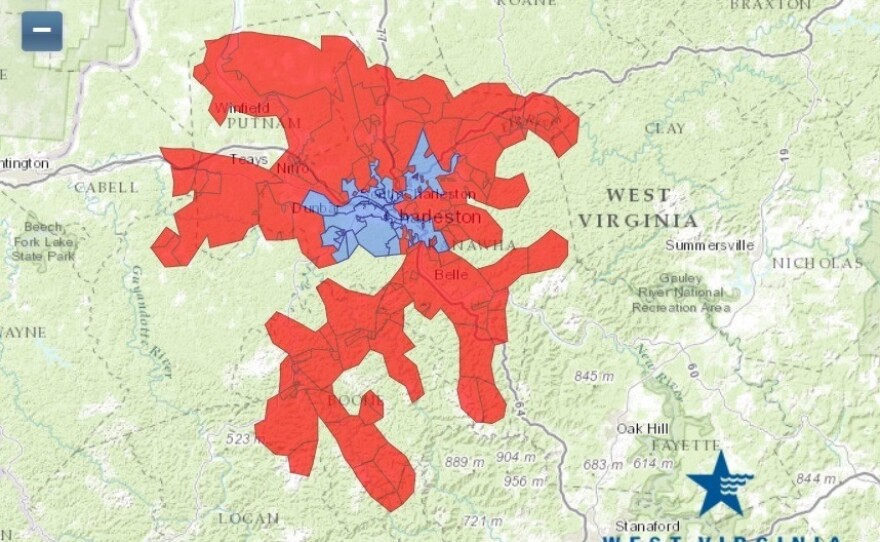

The map that shows residents of nine counties in West Virginia whether they can start using the water from their taps is slowly starting to change from red to blue.
That's good news because blue means customers in those areas can start flushing their homes' and businesses' pipes -- and after that, start using their water again for cooking, cleaning and drinking.
NPR's Hansi Lo Wang tells our Newscast Desk that as of mid-morning Tuesday, about 35,000 of the 300,000 people who had been without water since last Thursday are now in the all-clear zones.
Update at 2:15 p.m. ET: Map Was Incorrect; Schools Closed Weds.
After we noticed a discrepancy in this morning's water-safety map and the one being displayed today -- in which the South Hills area went from blue to red -- Hansi passed along word that a correction was made.
"It was an error. South Hills back to red on the map," says Lawrence Messina, communications director for West Virginia's Department of Military Affairs and Public Safety, via Twitter.
And according to a Twitter feed that relays weather-related school closings in the state, "All schools in #Kanawha Co closed Wed 1/15/14 due to water crisis code A employees report at regular time."
It was last Thursday when a chemical used in coal processing leaked into the Elk River near Charleston and then into the region's water supply system. Residents and businesses across nine counties were warned not to use the water coming from their taps because the chemical -- methylcyclohexene methanol -- can cause severe burning in the throat, vomiting and skin blistering.
On Morning Edition today, NPR's Daniel Zwerdling reported that a team of federal investigators from the Chemical Safety Board is going to look into the leak.
Related:
-- FAQs for West Virginia American Water Kanawha Valley Customers
Copyright 2014 NPR. To see more, visit www.npr.org.






